Ethiopia, often referred to as the “Land of Origins,” is a country steeped in history and cultural diversity. Nestled in the Horn of Africa, Ethiopia is known for its breathtaking landscapes, ancient heritage, and unique traditions. As one of the oldest nations in the world, it has a rich tapestry of cultures, languages, and historical sites that tell the story of humanity’s beginnings. From the rock-hewn churches of Lalibela to the bustling markets of Addis Ababa, Ethiopia offers an unforgettable experience for travelers seeking to explore the roots of civilization.
Table of Contents
Geography
Ethiopia is a landlocked country located in the Horn of Africa, bordered by Eritrea to the north, Djibouti and Somalia to the east, Sudan and South Sudan to the west, and Kenya to the south. Covering an area of approximately 1.1 million square kilometers, Ethiopia is the second-largest country in Africa by population and one of the oldest independent nations in the world.
The country’s diverse topography features the Ethiopian Highlands, often referred to as the “Roof of Africa,” which boasts some of the highest peaks on the continent, including Ras Dashen. The landscape varies from rugged mountains and plateaus to lowland plains, providing a unique habitat for diverse flora and fauna. The Great Rift Valley runs through the country, creating a distinct geographical divide and contributing to its rich biodiversity.
Ethiopia is also home to several major rivers, including the Blue Nile, which is one of the tributaries of the Nile River. The country’s climate varies significantly, with highland areas experiencing cooler temperatures, while the lowland regions have a hot and arid climate. This diverse geography supports a range of agricultural activities, making Ethiopia one of Africa’s primary agricultural producers.
States of Ethiopia
Ethiopia is divided into 11 regional states (also known as regional states or regions) and 2 chartered cities. The 11 regional states are: Here’s a combined table listing all the regional states and chartered cities of Ethiopia along with their capitals:
| Region/City | Capital |
|---|---|
| Afar | Semera |
| Amhara | Bahir Dar |
| Benishangul-Gumuz | Assosa |
| Gambela | Gambela |
| Harari | Harar |
| Oromia | Addis Ababa (Oromia’s administrative center is in Adama, also known as Nazret) |
| Sidama | Hawassa |
| Somali | Jijiga |
| Southern Nations, Nationalities, and Peoples’ Region (SNNPR) | Hawassa (Temporary capital: Wolaita Sodo) |
| Tigray | Mekelle |
| South West Ethiopia Peoples’ Region | Bonga |
| Addis Ababa (Chartered City) | Addis Ababa |
| Dire Dawa (Chartered City) | Dire Dawa |
History
Ethiopia has a rich and complex history that dates back thousands of years. It is often considered one of the cradles of civilization, with archaeological evidence suggesting that early hominids, including Australopithecus afarensis (famously known as “Lucy”), roamed the region around 3.2 million years ago. The Kingdom of Aksum emerged around the 1st century AD, becoming a significant trade empire known for its impressive architectural achievements and the introduction of Christianity.
Christianity was adopted as the state religion in the 4th century, making Ethiopia one of the first countries to embrace Christianity. The Ethiopian Orthodox Tewahedo Church plays a vital role in the nation’s culture and identity. The country is also known for its ancient rock-hewn churches in Lalibela, which were carved into solid rock in the 12th century and are now a UNESCO World Heritage Site.
In the late 19th and early 20th centuries, Ethiopia faced external threats from colonial powers, particularly during the Scramble for Africa. However, under Emperor Menelik II, Ethiopia successfully defeated the Italian invasion at the Battle of Adwa in 1896, securing its sovereignty and becoming a symbol of African resistance to colonialism.
Ethiopia’s modern history has been marked by political turbulence, including the overthrow of Emperor Haile Selassie in 1974 and the establishment of a Marxist-Leninist regime known as the Derg. The country experienced civil conflict and famine during this period. In the early 1990s, the Derg regime was overthrown, leading to the establishment of a federal republic. Despite ongoing challenges, Ethiopia has made significant progress in economic development and social reforms in recent years.
Top Ten Must-Visit Destinations
1. Addis Ababa
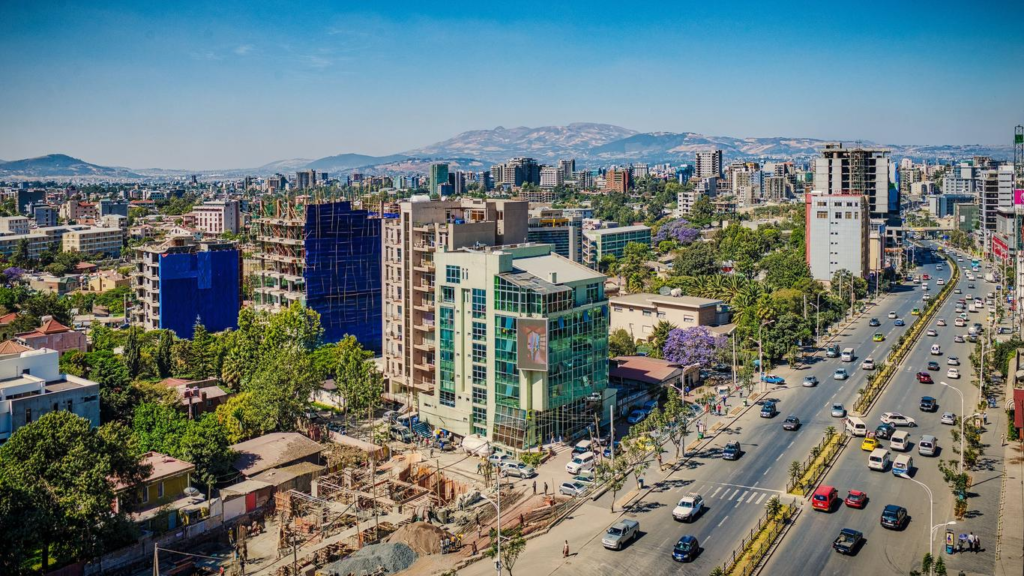
Addis Ababa, the capital city, is a vibrant metropolis known for its rich cultural scene and historical significance. Visitors can explore the National Museum of Ethiopia, which houses the famous fossilized remains of “Lucy.” The city is also home to the Holy Trinity Cathedral, an architectural masterpiece and a significant religious site. The bustling Merkato market is a must-visit for experiencing local life and sampling Ethiopian cuisine.
2. Lalibela
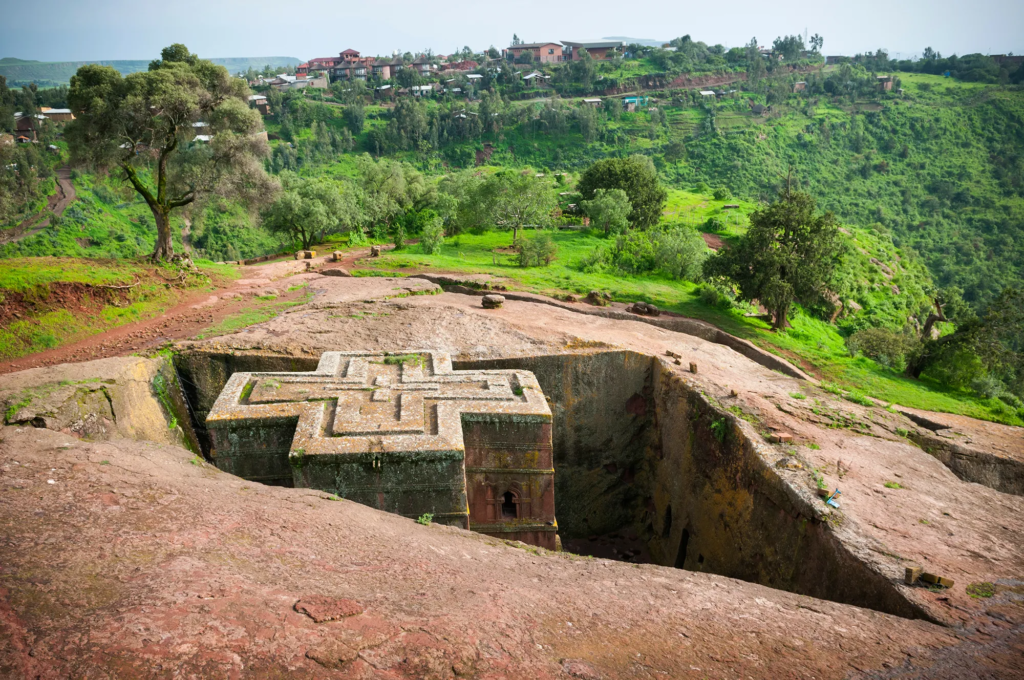
Lalibela is renowned for its stunning rock-hewn churches, often referred to as the “Eighth Wonder of the World.” Carved from solid rock in the 12th century, these churches serve as an important pilgrimage site for Ethiopian Orthodox Christians. Visitors can explore the intricate carvings and frescoes, as well as the spiritual atmosphere that permeates this UNESCO World Heritage Site.
3. Aksum

Aksum is an ancient city steeped in history, known as the capital of the Aksumite Empire. Visitors can explore the impressive obelisks, which are monumental tombstones, and the ruins of ancient churches. The Church of St. Mary of Zion is believed to house the Ark of the Covenant, making Aksum a significant religious site for Christians. The rich history and archaeological treasures make it a fascinating destination.
4. Simien Mountains National Park
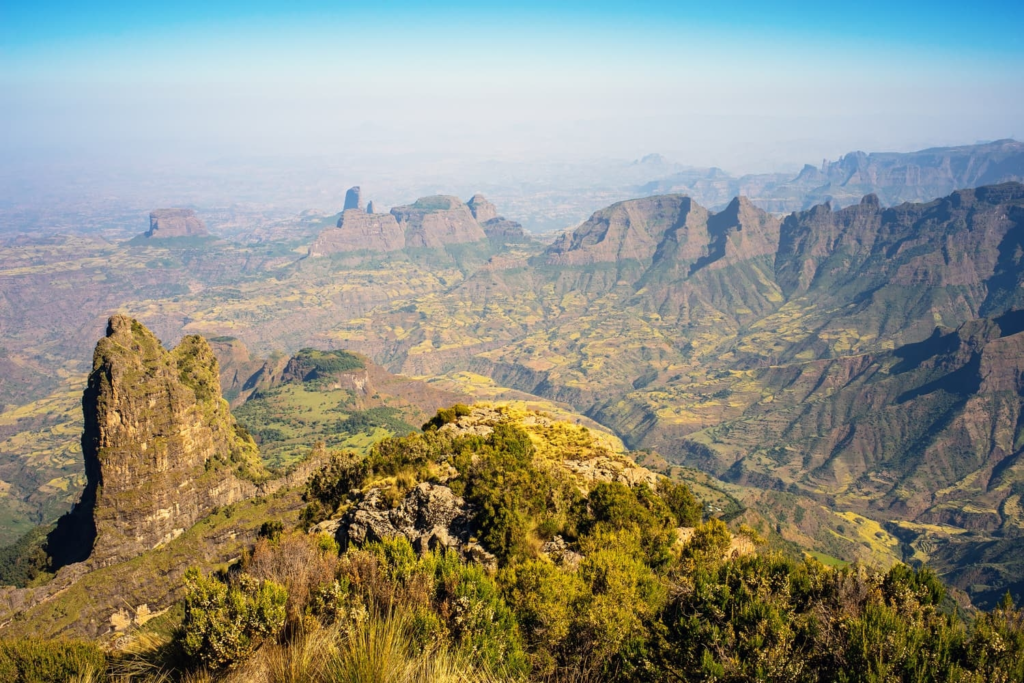
Simien Mountains National Park is a UNESCO World Heritage Site known for its breathtaking landscapes and diverse wildlife. The park is home to unique species, including the gelada baboon and the Ethiopian wolf. Hiking trails lead through dramatic peaks, deep valleys, and lush grasslands, offering visitors stunning views and opportunities for wildlife encounters.
5. Gondar
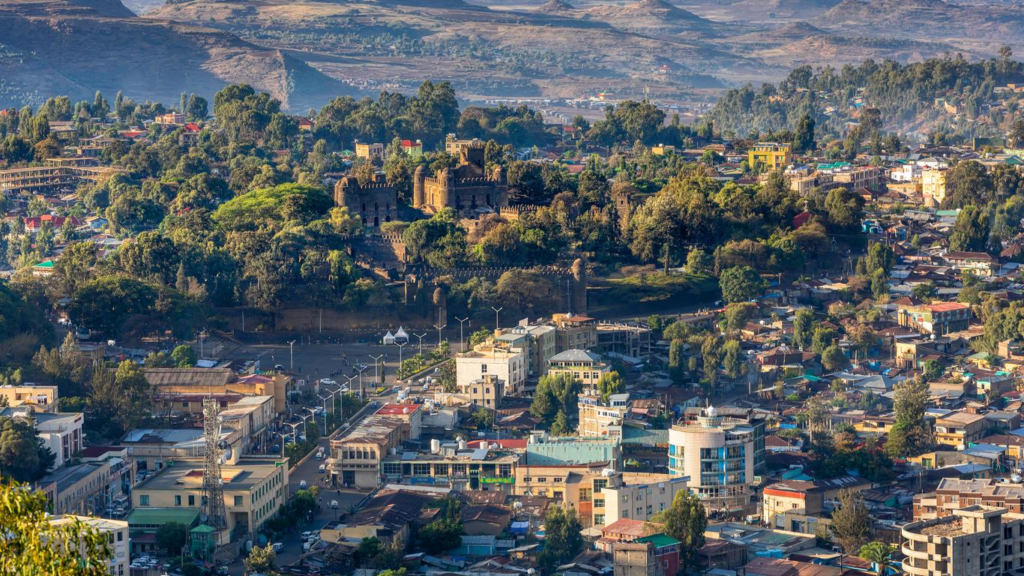
Gondar is a historic city known for its impressive castles and palaces, often referred to as the “Camelot of Africa.” The Royal Enclosure, a UNESCO World Heritage Site, features several castles and churches dating back to the 17th century. Visitors can explore the vibrant markets and immerse themselves in the city’s rich history and culture.
6. Bahir Dar
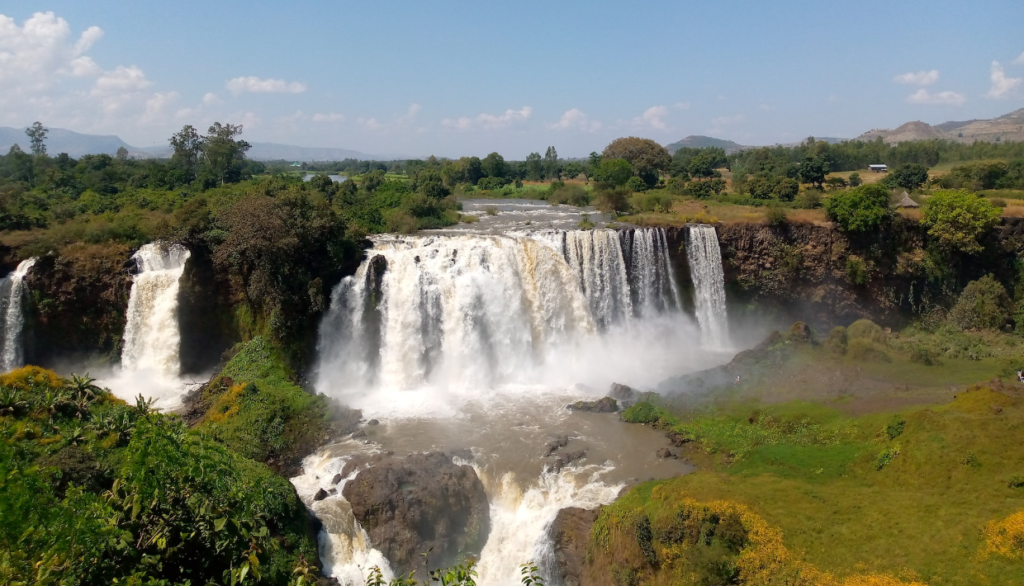
Bahir Dar, situated on the shores of Lake Tana, is known for its picturesque landscapes and cultural heritage. The Blue Nile Falls, also known as Tis Issat, is a stunning waterfall located nearby. Visitors can take boat trips on Lake Tana to explore its ancient monasteries and experience the serene beauty of the lake.
7. Harar
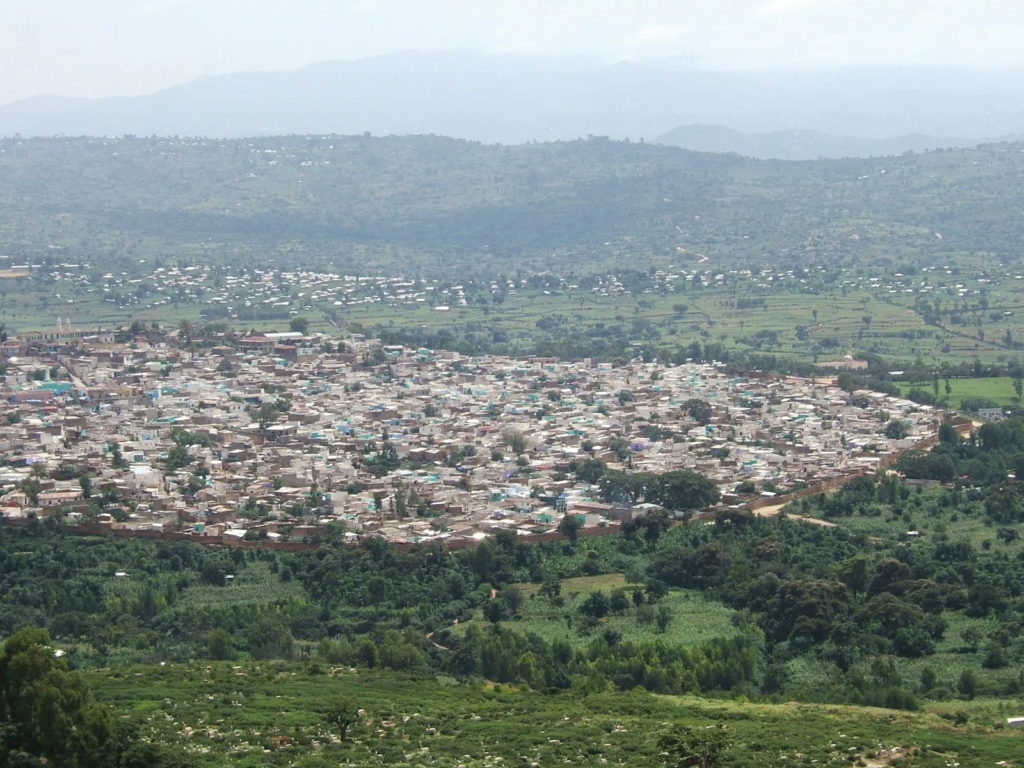
Harar is a historic city and a UNESCO World Heritage Site known for its unique Islamic architecture and rich cultural heritage. The city is famous for its narrow alleyways, colorful markets, and traditional houses. Harar is also known for its unique tradition of “hyena feeding,” where locals feed wild hyenas, creating a fascinating cultural experience.
8. Danakil Depression
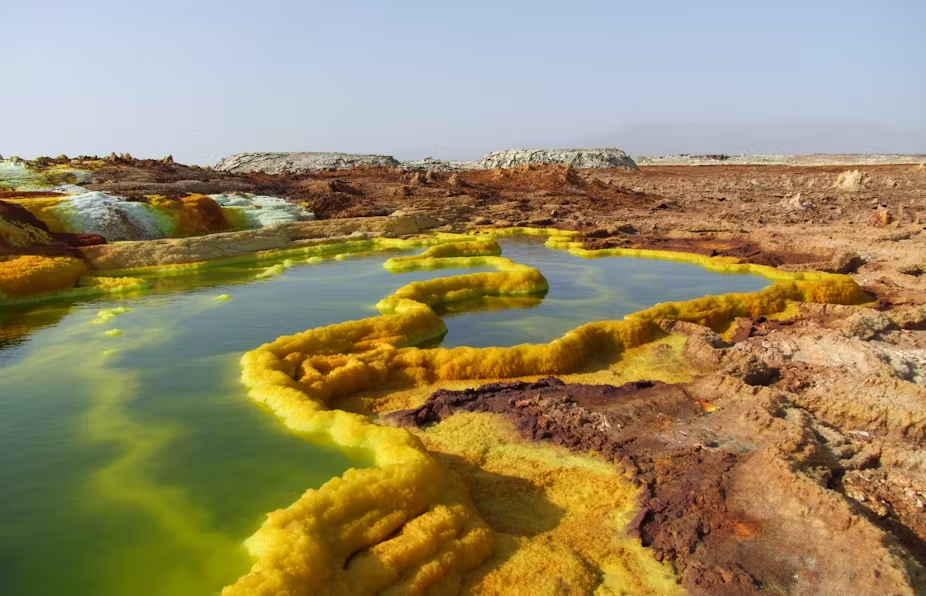
The Danakil Depression is one of the hottest places on Earth, known for its otherworldly landscapes and geological wonders. Visitors can explore active volcanoes, salt flats, and colorful sulfur springs. The region’s extreme environment and stunning natural beauty make it a unique and adventurous destination for travelers.
9. Konso Cultural Landscape
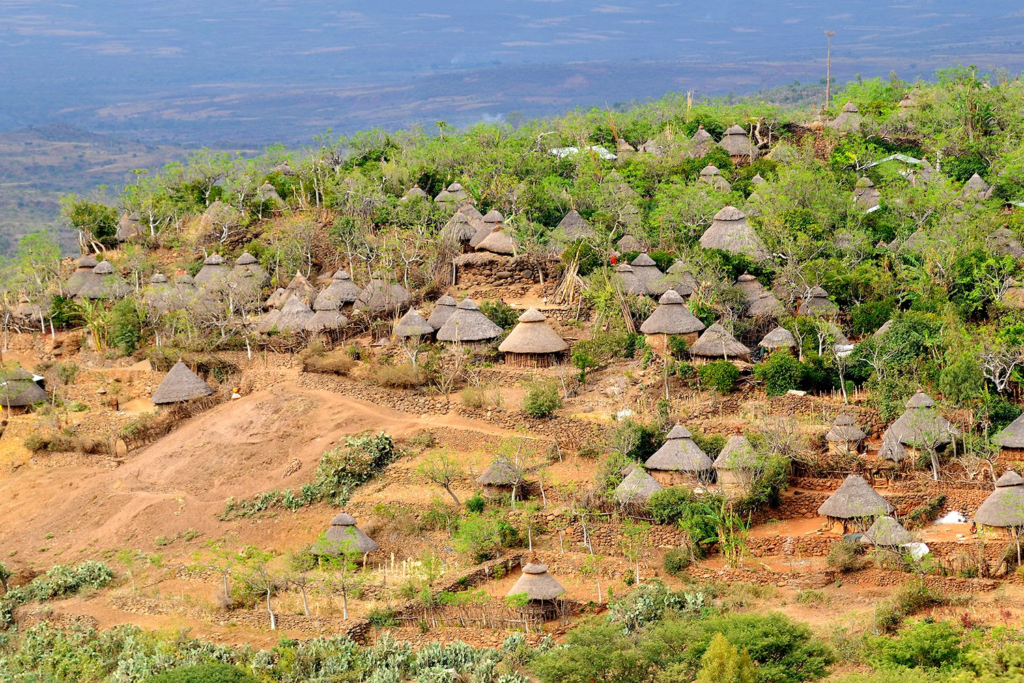
The Konso Cultural Landscape, a UNESCO World Heritage Site, is known for its unique terraced agriculture and traditional village structures. Visitors can explore the vibrant Konso villages, interact with the local people, and learn about their traditional practices and customs. The terraced fields showcase the ingenuity of the Konso people in adapting to their environment.
10. Omo Valley

The Omo Valley is home to numerous indigenous tribes, each with its distinct culture and traditions. Visitors can experience the rich diversity of the region by visiting local markets, participating in cultural ceremonies, and learning about the unique lifestyles of the various tribes. The valley’s stunning landscapes and vibrant communities make it a fascinating destination for cultural exploration.
Culture
Ethiopia’s culture is a vibrant tapestry woven from its diverse ethnic groups, languages, and traditions. The country is home to over 80 ethnic groups, each with its distinct customs, languages, and ways of life. Amharic is the official language, while many other languages, such as Oromo and Tigrinya, are widely spoken throughout the country.
Traditional music and dance play a significant role in Ethiopian culture. The country’s music is characterized by unique scales and rhythms, with traditional instruments such as the krar (lyre), masenqo (single-stringed fiddle), and the begena (large lyre) commonly used. Dance styles vary among ethnic groups, with energetic performances often featuring intricate footwork and expressive movements.
Ethiopian cuisine is renowned for its distinct flavors and communal dining traditions. Injera, a sourdough flatbread made from teff flour, serves as the staple food and is typically served with various stews and vegetable dishes. The communal style of eating encourages sharing and fosters a sense of community during meals. Coffee holds a special place in Ethiopian culture, with elaborate coffee ceremonies symbolizing hospitality and friendship.
Festivals
Ethiopia hosts a variety of festivals that reflect its rich cultural heritage and religious traditions. One of the most significant festivals is Timkat, celebrated in January to commemorate the baptism of Jesus Christ in the Jordan River. The festival features colorful processions, traditional music, and dance, with the faithful dressing in white garments as they participate in the celebrations.
Another important festival is Enkutatash, the Ethiopian New Year, celebrated in September. This festive occasion marks the end of the rainy season and the beginning of spring, symbolizing renewal and hope. Families gather to celebrate with feasting, dancing, and the exchange of gifts.
Fasika, the Ethiopian Orthodox Easter, is another prominent celebration, marked by fasting and feasting. The festival includes special church services, traditional meals, and communal gatherings. These festivals not only celebrate religious significance but also highlight the unity and resilience of the Ethiopian people.
Economy
Ethiopia’s economy is primarily agrarian, with agriculture contributing significantly to the country’s GDP and employment. The agricultural sector employs around 70% of the population, with coffee, cereals, pulses, and oilseeds being the main crops. Ethiopia is known for its high-quality coffee, which is an essential export product and holds cultural significance in Ethiopian society.
In recent years, Ethiopia has made significant strides in diversifying its economy, with investments in manufacturing, services, and infrastructure development. The government has focused on promoting industrial
ization, attracting foreign investment, and improving access to education and healthcare. The growth of the textile and garment industry, as well as the construction sector, has contributed to job creation and economic development.
Ethiopia’s economy has shown resilience despite challenges such as climate change, political instability, and external economic pressures. The government aims to achieve middle-income status by 2025 through sustainable development initiatives and strategic planning.
Cuisine
Ethiopian cuisine is renowned for its diverse flavors and unique dining traditions. The staple food is injera, a sourdough flatbread made from teff flour, which is typically served with various stews, known as wot. These stews can be made from meat, lentils, or vegetables, and they are often seasoned with a blend of spices called berbere, which gives Ethiopian dishes their distinctive flavor.
Ethiopians traditionally eat communally, sharing dishes placed on a large platter. Diners use their hands to tear off pieces of injera and scoop up the stews, fostering a sense of togetherness during meals. Coffee plays a central role in Ethiopian culture, and the coffee ceremony is a cherished tradition, symbolizing hospitality and friendship.
Top Eight Most Famous Food



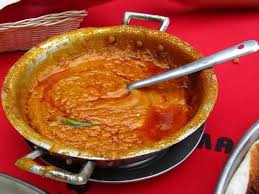




Interesting Facts
- Ethiopia is the only African country that was never colonized.
- The Ethiopian calendar is approximately seven to eight years behind the Gregorian calendar.
- Ethiopia is known as the birthplace of coffee, with coffee beans originating from the region.
- The country has its unique script called Ge’ez, used for writing the Amharic language.
- Ethiopia has 13 months in its calendar, with each month having 30 days, plus an additional 5 or 6 days.
- The country is home to the world’s largest continuous mountain range, the Ethiopian Highlands.
- Ethiopia has over 80 ethnic groups, making it one of the most diverse countries in Africa.
- The country is famous for its ancient rock-hewn churches, which are a UNESCO World Heritage Site.
- Ethiopia celebrates its New Year, Enkutatash, on September 11 or 12, depending on the leap year.
- The Great Rift Valley, which runs through Ethiopia, is one of the most significant geological features on the planet.
Conclusion
Ethiopia is a captivating country that offers a rich tapestry of history, culture, and natural beauty. From its ancient civilizations and UNESCO World Heritage Sites to its diverse landscapes and vibrant traditions, Ethiopia invites travelers to explore the roots of humanity and experience the warmth of its people. As visitors journey through this remarkable nation, they will discover a unique blend of ancient heritage and modern development, creating unforgettable memories in the land of origins.

